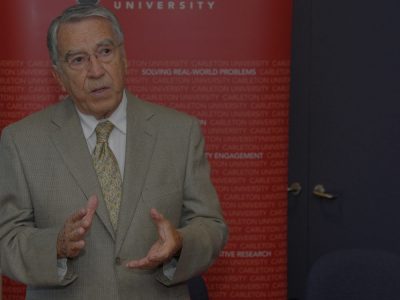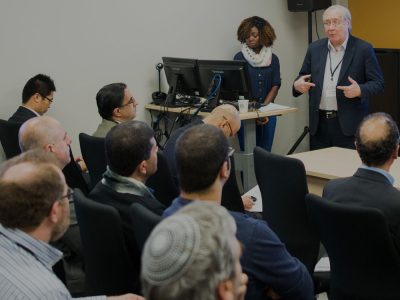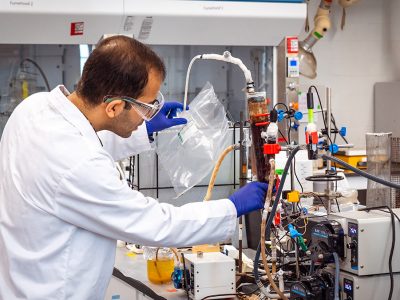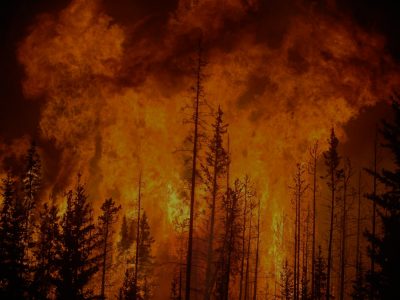By Tyrone Burke
Photos by Chris Roussakis
There’s a whole different energy in the North, and it has nothing to do with the spirit of the Klondike. Northern Canada is ultra-energy intensive, but it’s disconnected from Canada’s electricity generating infrastructure. Local power stations keep the lights on.
The reason for the disconnect: geography. If Canada’s territories were a country, they would be the world’s seventh largest – behind Australia. Yet the population is less than Sudbury’s. With few rate-payers, tapping into the southern grid is prohibitively expensive. So costs remain high and fuel is imported.
Renewable energy promises independence and lower costs, but there are unique challenges.
“There was a dearth of knowledge on renewable energy in the North,” says Alexandra Mallett. The professor at Carleton’s School of Public Policy and Administration co-authored theReport on the State of Alternative Energy in the Arctic with David Cherniak, Vincent Dufresne, Lawrence Keyte, and Carleton’s Stephan Schott. Funded by Polar Knowledge Canada, it’s an overview of northern renewable energy projects.
“Studies had looked at potential, but we were asked to show what’s happening on the ground. It brings it in one place: a policy-maker in Whitehorse can see what’s out there now.”
The research team worked with the Arctic Energy Alliance to gather information, and participated in the Northwest Territories Energy Charrette, a collaborative planning process with communities, governments, NGOs, experts and industry to develop energy strategy. It helped them understand what was most important.
“A common thread was a northern perspective. A community would have study `X’ done, and it would use assumptions from the National Renewable Energy Laboratory in Colorado . . . People wanted northern data.”
Energy Demand is Key
The social context is also unique.
“When studying energy, there’s a bias toward supply — a sexiness to infrastructure — but northerners said we needed to look at demand. Many northerners don’t own their home. For landlords, it’s not in their interest to make upgrades if a tenant is paying for electricity. Tenants don’t care if they’re wasting energy, if utilities are included. We wanted to look at reducing demand, not just increasing supply.”
That abundance of rental and public housing relates to another issue: a lack of opportunity.
“Training – developing skills — was important,” Mallett says. “In Fort MacPherson, they wanted a local biomass source rather than an imported one, because it creates jobs. Diesel won’t go away, but people are interested in hybrid systems, and how renewable energy can create opportunities.”
Job creation is a challenge throughout the North. It’s not only because of infrastructure.
As the Northwest Passage thaws, possible commercial fisheries emerge, but ensuring they’re sustainable demands collaboration and capacity building.
“The Department of Fisheries and Oceans can’t provide the same data they do on the east and west coasts. They can’t be there regularly,” says Schott, who researches fisheries near Gjoa Haven, Nunavut, on King William Island.

“They do a test fishery every few years to see if it might be sustainable, but you don’t get much more data than that. They can’t have people in every community. It’s very remote.”
Gjoa Haven has had small-scale commercial fisheries, but they fizzled out. Now, they want a fishery that’s economically viable, but won’t interfere with subsistence. So the local hunting and trapping organization engaged southern scientists to help them better understand the size, life cycle and genetics of fish stocks.

They needed to know it fish they see in one area at one time of the year are the same fish they see elsewhere, at other times.
Identifying Fish Genetics
Molecular geneticists from Queen’s University are working with Schott on the Genome Canada-funded Towards a Sustainable Fishery for Nunavummiutstudy. It’s identifying the population’s genetics to better understand migration and demographics.

The $5.6-million project has zeroed in on char and whitefish at the mouth of Back River, on Canada’s mainland. A traditional fishing area, a powerful current keeps the water open year-round. The food-rich swirl of fresh and salt water supports large fish in large numbers. The team consulted with Elders to determine if there are other ecological hot spots like it.
“They understand where they grew up,” Schott says, “what their ancestors told them about that land. It’s the last generation that really did that. They’re transferring it to some extent to their children and grandchildren, and we’re documenting their knowledge of hunting, wildlife and fishing.”
Science supplements traditional knowledge, and the community is building scientific skills.
“If the fishery started – and it would obviously be the community’s decision – it would be an adaptive management system, where every year you ask: `How can we adjust quotas? Can we make them more sustainable? Should we reduce them? Not fish one year?’
“That’s where capacity training comes in. Once we leave, the community can continue collecting data, and feeding it to DFO, who aren’t there on a consistent basis. A fishery would likely start with existing, established quotas. We’re building capacity to self-assess and sample fish; dissect them; test them; how they’re related . . . then connect that data so they know how stocks are changing.”
Wednesday, March 21, 2018 in Environment and Sustainability, Public Policy
Share: Twitter, Facebook



